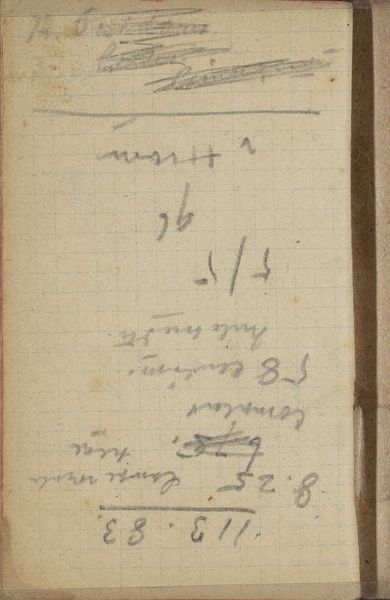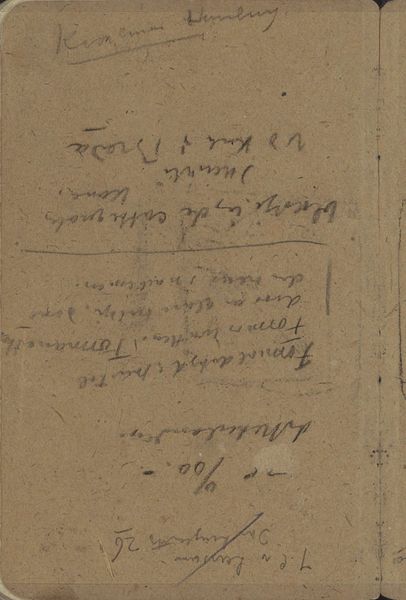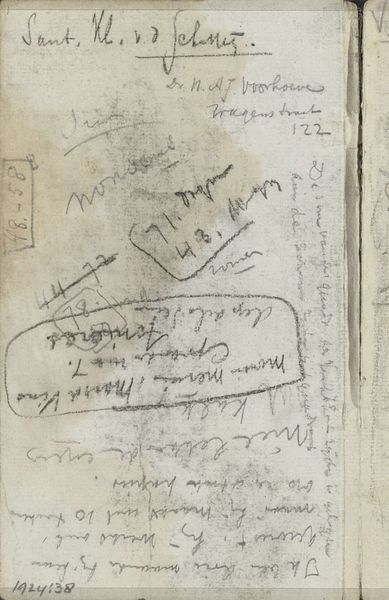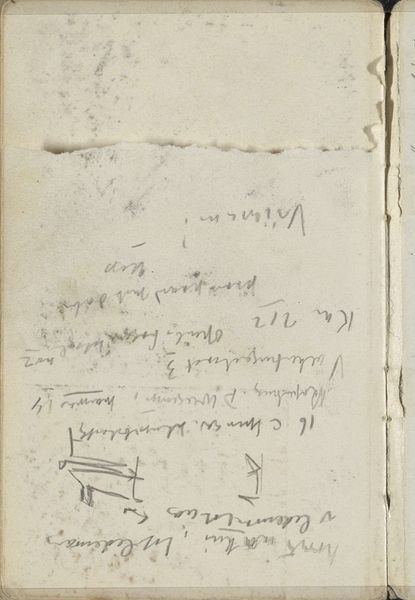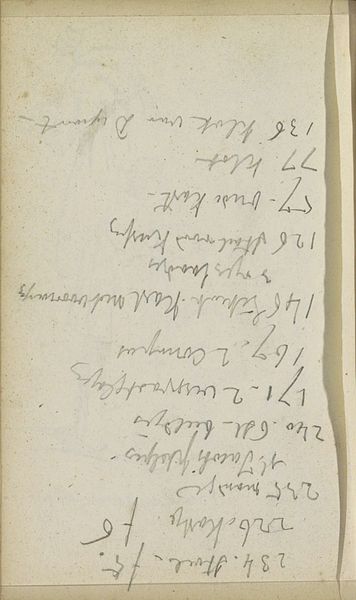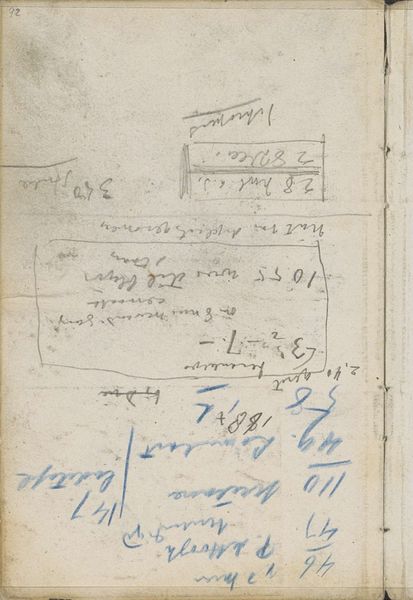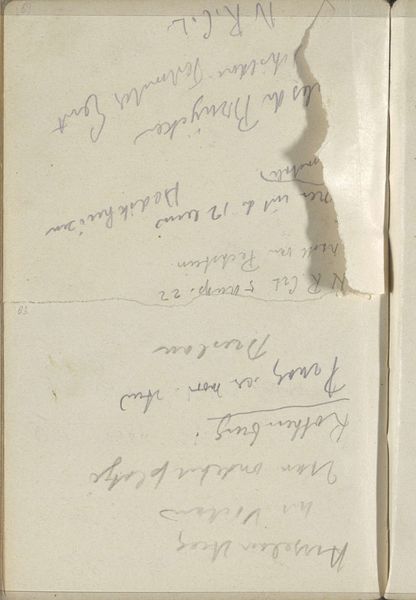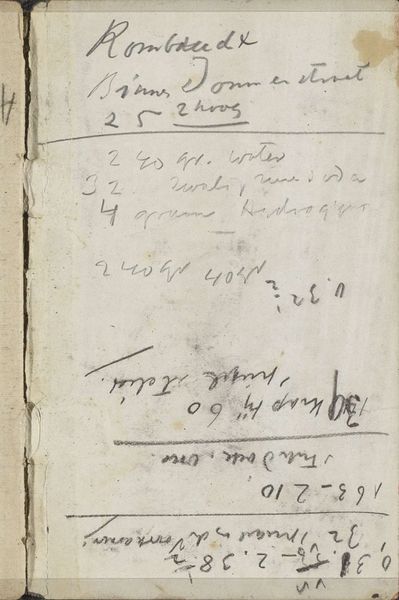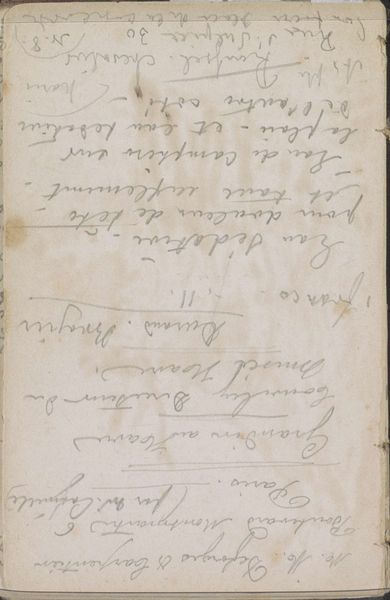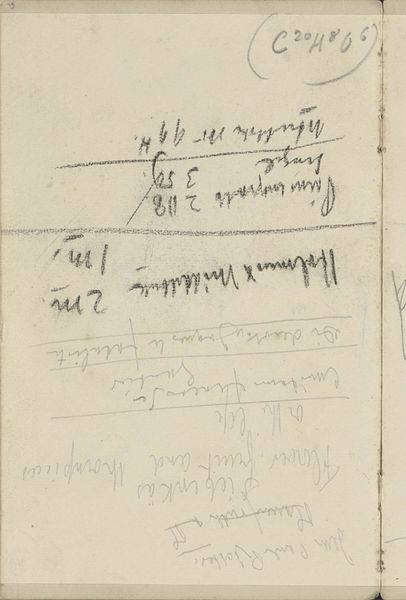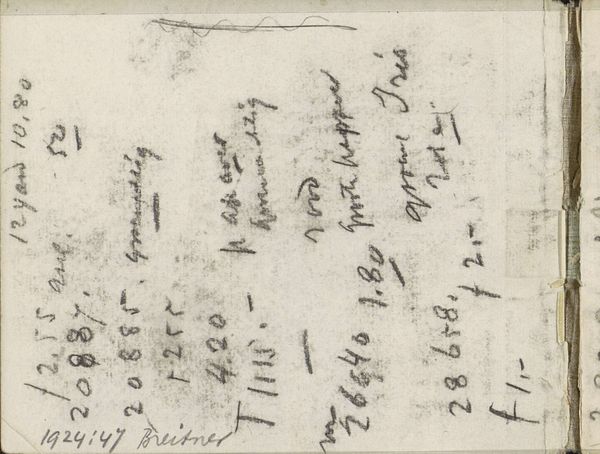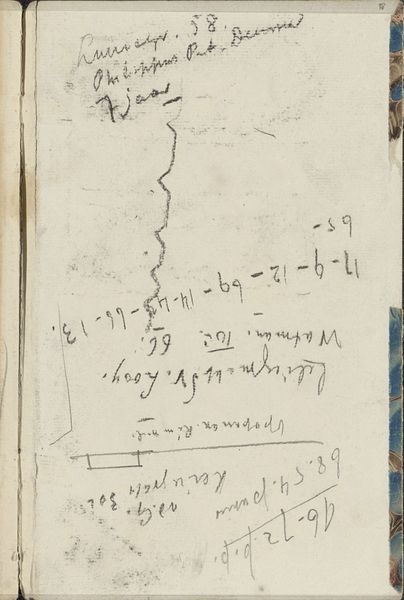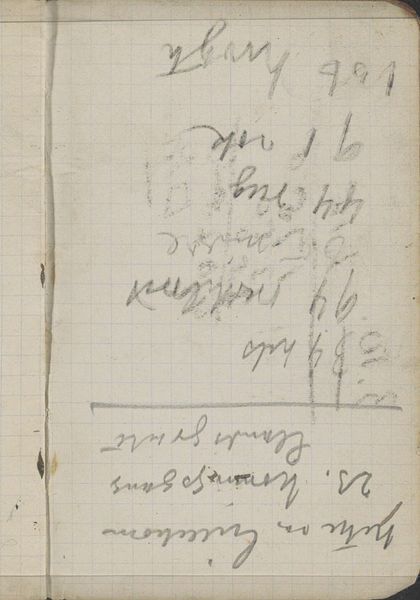
Dimensions: height 125 mm, width 78 mm
Copyright: Rijks Museum: Open Domain
Editor: This is George Hendrik Breitner's "Annotations," made in 1897. It's a drawing using pencil, watercolor, and other mediums on paper, and it's currently housed in the Rijksmuseum. There’s something quite intimate and immediate about this sketchbook page; what strikes you when you look at it? Curator: The fragmentariness is compelling. Breitner’s 'Annotations' provides a rare glimpse into the artist's process, blurring the lines between personal reflection and artistic observation. Think about the socio-political climate of the late 19th century. Rapid urbanization, industrialization… How might Breitner’s fragmented sketches and notes be a response to that feeling of being overwhelmed by modernity? Editor: So you're suggesting it's more than just a casual sketchbook; it reflects the anxieties of the time? Curator: Precisely. The seemingly random jottings and sketches, the use of a grid, feel like a visual representation of trying to make sense of a rapidly changing world. Do you see any potential connections between this fragmented approach and broader cultural movements of the era, such as the rise of impressionism? Editor: I can see how the incomplete, fleeting quality connects with Impressionism. Curator: And what about the materials themselves? The aged, toned paper, the fading ink… They speak to a passage of time, a sense of impermanence. The handwriting could hold all the codes! Whose history does that record, whose history does that hide? Editor: That makes me see it differently. It’s like looking at a secret document, hinting at something bigger. Curator: Indeed! It's about finding meaning in the margins, elevating the everyday to something worthy of artistic exploration. The personal becomes political. What do you take away from it now? Editor: It encourages me to consider how social context shapes not only the themes within art but also an artist's working methods, and how the unfinished and discarded pieces of the creative process can reveal deeper social meanings.
Comments
No comments
Be the first to comment and join the conversation on the ultimate creative platform.
